Celiac Disease: Treatment and management (Gluten triggers/Complications/Refractory cases)- Market Insight, Clinical trial, Product Analysis, Patent Analysis, Competitive Analysis and Market Forecast – 2023-2033
Celiac disease, an enduring digestive and immune disorder, inflicts damage upon the small intestine upon consumption of gluten-containing foods. Characterized by a diverse range of symptoms, celiac disease can lead to persistent digestive issues and hinder the absorption of vital nutrients, thereby impacting overall health.
Symptoms and Manifestations
Celiac disease can manifest with a variety of symptoms, affecting both the digestive system and other parts of the body. In children, digestive symptoms are more common, while adults might experience symptoms beyond the digestive realm. It’s noteworthy that some individuals with celiac disease may remain asymptomatic.
The trigger for celiac disease lies in the consumption of gluten-rich foods. Gluten, a protein found naturally in certain grains such as wheat, barley, and rye, can also be added to numerous food products. In individuals with celiac disease, the ingestion of gluten sparks an abnormal immune reaction that targets the small intestine, resulting in damage.
The cornerstone of celiac disease management revolves around adopting a gluten-free diet. Eliminating gluten from one’s diet not only promotes healing of the small intestine but also alleviates symptoms. A gluten-free diet assists in managing and preventing the symptoms and complications associated with celiac disease.
The journey to managing celiac disease begins with medical guidance. Doctors often refer individuals with celiac disease to registered dietitians specializing in this field. These professionals impart essential knowledge on how to avoid gluten while ensuring a balanced and nutritious diet. They offer insights such as:
Apart from dietary changes, individuals with celiac disease must be cautious of hidden sources of gluten. Some medications and products may inadvertently contain gluten, although typically in minuscule amounts that may not elicit symptoms. It’s important to inquire with healthcare professionals and pharmacists about potential gluten content in:
A gluten-free diet often leads to the alleviation of various symptoms and complications of celiac disease. Dermatitis herpetiformis, a skin manifestation of celiac disease, might require additional treatment alongside a gluten-free diet. In some cases, doctors may prescribe medication to control symptoms while the diet takes effect.
After initiating a gluten-free diet, regular follow-up visits with healthcare professionals are recommended. These visits involve assessing symptom improvement and conducting blood tests to monitor antibody levels. If symptoms persist despite a gluten-free diet, further investigation is necessary. Around 20% of individuals with celiac disease might experience continued or recurrent symptoms due to various factors.
Refractory celiac disease, though rare, poses a challenge where symptoms persist or return despite strict adherence to a gluten-free diet. This condition can lead to complications, including malnutrition and specific types of cancer. Diagnosis and management of refractory celiac disease require advanced testing and tailored treatment approaches.
In conclusion, celiac disease is a complex condition that demands vigilance and lifestyle adjustments to achieve optimal health. The management primarily centers around adopting a gluten-free diet, under the guidance of healthcare professionals, leading to improved well-being and quality of life for those affected.
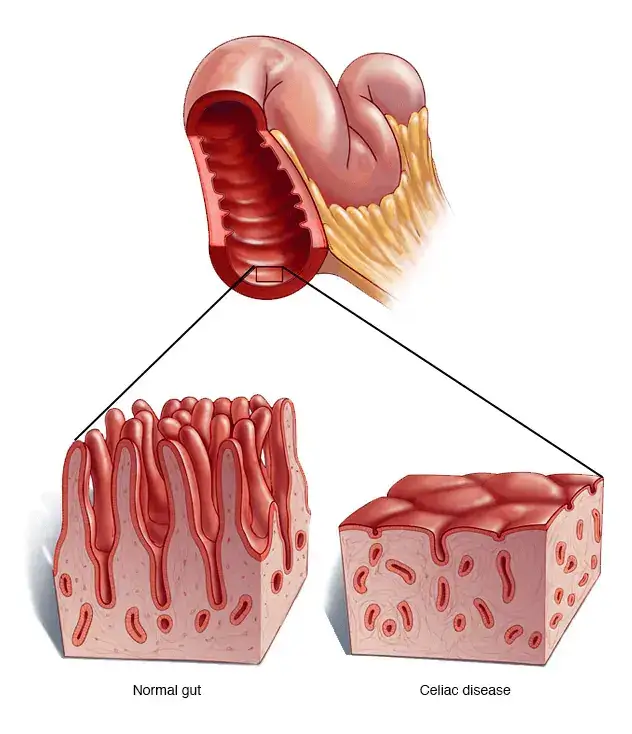
Credits: (https://www.mayoclinic.org/diseases-conditions/celiac-disease/multimedia/celiac-disease/img-20008072)
For a comprehensive grasp of competitive dynamics within the Celiac disease landscape over the short to mid-long term, acquiring insights into the developmental pipeline is essential to strategically position a product in the market
Market Landscape: Celiac disease: Example Illustration: Distribution by Pipeline Candidates
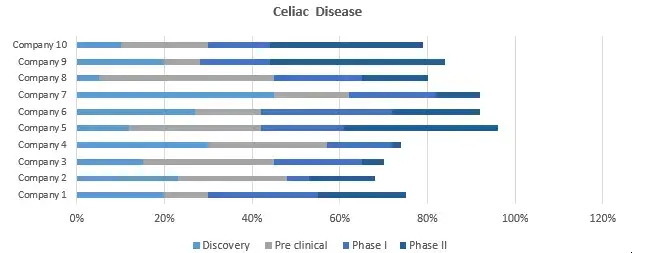
This overview emphasizes the engagement of stakeholders in shaping treatments for Celiac Disease, encompassing financial aspects, treatment choices, and recent advancements.
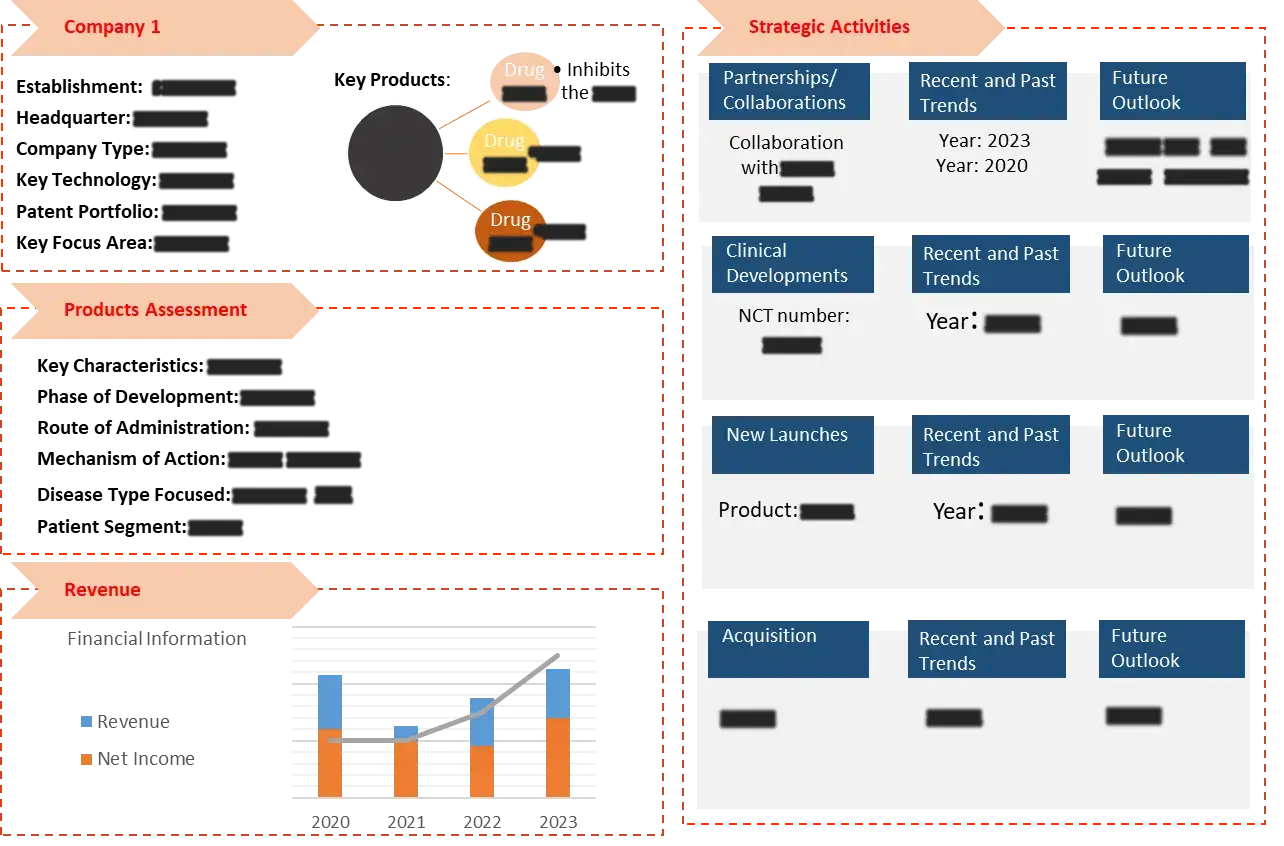
Analyzing patents provides priceless insights into groundbreaking progress and emerging technologies in the field of Celiac disease, enhancing your understanding of inventive approaches for new treatments.
On the basis of Annual application trend:

On the basis of the legal status of the patents:
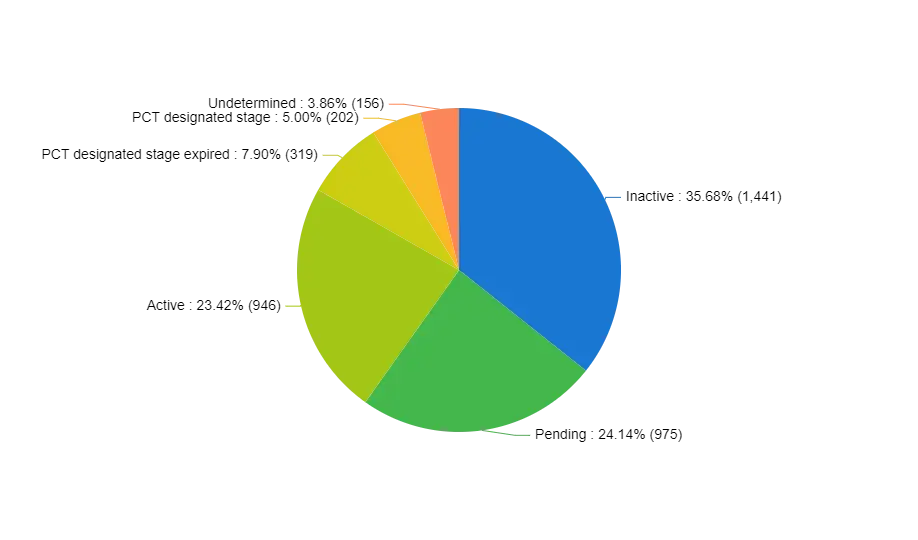
Over the last five years, numerous drugs/therapies have been subjected to assessment in registered clinical trials across diverse regions, advancing to later developmental stages for Celiac disease.
Example illustration 1: Distribution of Clinical Trials by Status:
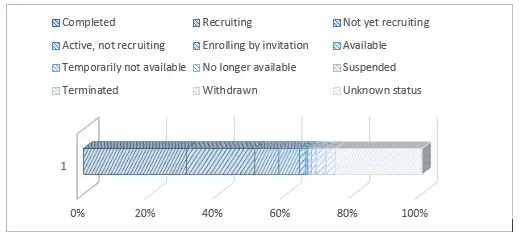
Example illustration 2: Distribution of Clinical Trials by Phase of Development:
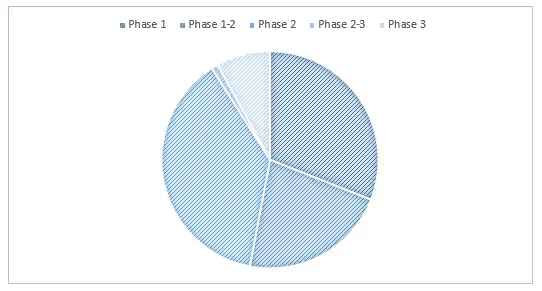
Supported by endorsements for multiple promising drug candidates and the observation of positive clinical outcomes, the Celiac Disease market is categorized into various segments, poised for substantial growth in the coming decade
Revenues by Key Geographical Regions, 2023-2033 (USD Million)

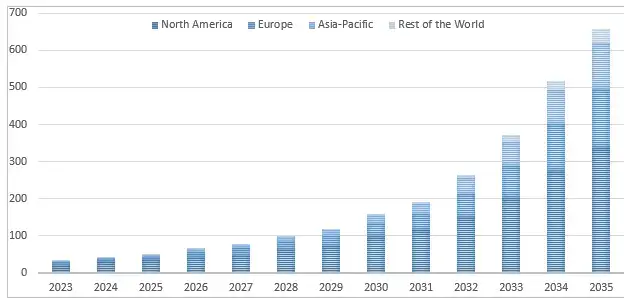
Given the presence of numerous companies within the realm of Celiac Disease, potential contenders may emerge in the market, aiming to establish their dominance.

In order to give the most precise estimations and forecasts, Wissen Research uses an extensive and iterative research approach that is focused on reducing deviation. The company blends top-down and bottom-up methodologies for market segmentation and quantitative estimation. In addition, data triangulation, which examines the market from three separate angles, is a recurrent topic present in all of our research studies. Important components of the approach used for all of our studies include the following:
Preliminary data mining
On a wide scale, unprocessed market data is collected. Continuous data filtering makes sure that only verified and authenticated sources are taken into account. Additionally, data is extracted from a wide range of reports in our repository and from a number of reputable premium databases. We gather information from raw material suppliers, distributors, and purchasers to help with this since understanding the entire value chain is crucial for a thorough understanding of the market.
Surveys, technical symposia, and trade magazines are used to gather information on technical concerns and trends. Technical information focusing on white space and freedom of movement is also obtained from an intellectual property standpoint. Additionally, information on the industry’s drivers, constraints, and pricing patterns is obtained. As a result, a variety of original data are included in the material that is then cross-validated and certified with published sources.
Statistical model
We use simulation models to generate our market projections and estimates. Every study receives a special model that is tailored to it. Data for market dynamics, the technology environment, application development, and pricing patterns are gathered and supplied into the model all at once for analysis. The relative relevance of these factors is investigated, and their impact on the forecast period is assessed, using correlation, regression, and time series analysis. The process of market forecasting combines technological analysis with economic strategies, practical business acumen, and subject expertise.
Econometric models are frequently used for short-term forecasting, but technology market models are typically employed for long-term forecasting. These are based on a confluence of the business environment, regulatory environment, economic projection, and technical landscape. In order to develop global estimates, it is preferable to estimate markets from the bottom up by integrating data from key regional markets. This is required to ensure accuracy and a complete comprehension of the subject. Among the variables taken into account for forecasting are:
Regulations and anticipated developments
We give these criteria weights and use weighted average analysis to assess their market influence in order to calculate the anticipated market growth rate.
Primary research | Secondary research |
· Manufacturers · Technology distributors and wholesalers · End-user surveys · Consumer surveys | · Company reports and publications · Government publications · Independent investigations · Economic and demographic data · Online searches · Literature studies · Research reviews · Case studies · Reference customers |
1.1 Overview of Celiac Disease
1.1.1 Definition and Types of Celiac Disease
1.1.2 Incidence and Prevalence of Celiac Disease
1.2 Epidemiology and Incidence Rates
1.2.1 Celiac Disease Incidence and Variations
1.2.2 Prevalence across Age Groups and Geographical Regions
1.3 Symptoms and Diagnosis
1.3.1 Common Symptoms and Clinical Presentation
1.3.2 Diagnostic Methods, Biomarkers, and Imaging Techniques
1.4 Pathophysiology
1.4.1 Mechanisms of Celiac Disease
1.4.2 Gastrointestinal Implications and Disease Progression
1.5 Causes and Risk Factors
1.5.1 Genetic and Environmental Influences
1.5.2 Factors Contributing to Disease Progression
2. Understanding Celiac Disease
2.1 Genetic Basis and Classification
2.1.1 Genetic Variants Associated with Celiac Disease
2.1.2 Classification of Celiac Disease Subtypes
2.2 Clinical Presentation and Disease Progression
2.2.1 Common Symptoms and Variability in Presentation
2.2.2 Progression of Disease and Potential Complications
2.3 Diagnostic Tools and Approaches
2.3.1 Serological Testing and Genetic Markers
2.3.2 Endoscopy and Histological Assessment
2.4 Prognostic Factors and Natural History
2.4.1 Predictors of Disease Severity and Long-term Outcomes
2.4.2 Variability in Clinical Course and Disease Trajectory
3. Current and Emerging Treatment Strategies
3.1 Symptomatic Management
3.1.1 Gluten-Free Diet and Nutritional Guidance
3.1.2 Management of Symptoms and Quality of Life
3.2 Pharmacological Therapies
3.2.1 Enzyme Supplements and Medications for Symptom Relief
3.2.2 Emerging Drug Candidates and Potential Therapeutic Targets
3.3 Personalized Approaches
3.3.1 Genetic Testing and Tailored Treatment Plans
3.3.2 Nutritional Counseling and Lifestyle Modifications
3.4 Investigational Therapies
3.4.1 Novel Therapeutic Modalities and Clinical Trials
3.4.2 Immune Modulation and Future Treatment Avenues
4. Market Insights
4.1 Global Celiac Disease Market Overview
4.1.1 Market Size and Growth Trends
4.1.2 Regional Distribution and Patient Demographics
4.2 Market Trends and Innovations
4.2.1 Advances in Diagnostics and Therapeutic Approaches
4.2.2 Digital Health Solutions and Patient Engagement
4.3 Market Drivers and Challenges
4.3.1 Regulatory Landscape and Labeling Regulations
4.3.2 Patient Education and Awareness Initiatives
5. Clinical Trials and Research Landscape
5.1 Ongoing Clinical Trials and Investigational Studies
5.1.1 Pipeline Overview and Therapeutic Targets
5.1.2 Trial Progress and Patient Recruitment Status
5.2 Promising Therapies in Development
5.2.1 Emerging Drug Candidates and Mechanisms of Action
5.2.2 Potential Impact on Disease Management
5.3 Innovative Trial Designs and Endpoint Selection
5.3.1 Biomarkers and Patient-Centric Outcomes
5.3.2 Adaptive Trials and Real-World Evidence Integration
6. Company Landscape and Competitive Analysis
6.1 Leading Companies in Celiac Disease Research and Therapeutics
6.1.1 Key Players and Market Share
6.1.2 Research and Development Initiatives
6.2 Company Profiles
6.2.1 Business Overview and Product Portfolios
6.2.2 Collaborations, Partnerships, and Licensing Activities
6.3 Market Dynamics and Competition
6.3.1 SWOT Analysis and Strategic Approaches
6.3.2 Market Entry Challenges and Future Outlook
7. Patent Landscape and Intellectual Property
7.1 Key Patents in Celiac Disease Research
7.1.1 Notable Patents and Innovative Concepts
7.1.2 Intellectual Property Trends and Leading Innovators
7.2 Patent Analysis and Landscape Overview
7.2.1 Global Patent Trends and Filing Patterns
7.2.2 Patent Enforcement and Legal Considerations
8. Market Forecast and Future Perspectives
8.1 Projected Growth and Market Forecast
8.1.1 Revenue Projections and Market Potential
8.1.2 Opportunities in Emerging Markets
8.2 Future Trends and Innovations
8.2.1 Precision Medicine and Personalized Treatment Plans
8.2.2 Technology-Enabled Disease Monitoring and Support
8.3 Patient-Centric Care and Enhancing Quality of Life
8.3.1 Patient Empowerment and Support Networks
8.3.2 Impact of Novel Therapeutic Modalities on Patient Experience
9. Regional Market Analysis (2023-2033)
9.1 United States Market Size and Trends
9.1.1 Total Market Size of Celiac Disease in the United States (2023-2033)
9.1.2 Treatment Landscape and Market Dynamics
9.2 European Market Size and Insights
9.2.1 Total Market Size of Celiac Disease in Europe (2023-2033)
9.2.2 Market Trends and Treatment Patterns
9.3 Asia-Pacific Market Size and Assessment
9.3.1 Total Market Size of Celiac Disease in Asia-Pacific (2023-2033)
9.3.2 Market Developments and Therapeutic Uptake
10. Conclusion
11. References
12. Appendix
S.no | Key Highlights of Report | |
1. | Patent Analysis | · Top Assignee · Geography focus of top Assignees · Assignee Segmentation · Network analysis of the top collaborating entities in Celiac Disease treatments patent applications · Technology Evolution · Key Patents · Application and Issued Trend · Key technology |
2. | Market analysis | · Current Treatment Options · Emerging Therapies and Research Developments (by product analysis and scientific analysis) · Strategic activities · Therapeutic activity of drugs · Company portfolio |
3. | Clinical Trials | · Analysis of clinical trial through graphical representation · Coverage of treatments from pre-clinical phases till commercialization (also including terminated and completed studies) |
4. | Forecast | · Detailed comprehension of the historic, current and forecasted trend of market by analysis of impact of these treatments on the market |
5. | Key Players | · Detailed profiles of the key players that are engaged in the development of approved drugs |
6. | Strategic activities of companies | · Collaboration/Mergers/Agreements/Partnerships/Acquisitions taken place by analyzed companies |
7. | Opportunity Analysis | · Technology evolution based on problem solution · Potential licensees · Geography of suppliers · Treatment trends |
8. | KOLs | · A detailed analysis and identification of the key opinion leaders (KOLs), shortlisted based on their contributions |
9. | SWOT | · SWOT analysis for treatments · Market Access |
10. | Drivers and Barrier | · Unmet needs · Drivers and barriers · Opportunity for new treatments |
LIST OF FIGURES
Figure number | Description |
Figure 1 | Terminology of Celiac Disease Over The Years |
Figure 2 | Celiac Disease Treatment– History and Present |
Figure 3 | Projection of Celiac Disease till 2033 in different geographies |
Figure 4 | Technology Categorization Of Drug Delivery Methods For Celiac Disease |
Figure 5 | Recent Technology Trends in Celiac Disease |
Figure 6 | Technology Evolution in Drug Delivery Market of Celiac Disease |
Figure 7 | Geographical Distribution of Patents of Top Assignees |
Figure 8 | Assignee Segmentation (Companies) |
Figure 9 | Assignee Segmentation (Educational Establishment) |
Figure 10 | Patent Based Key Insights Of xx |
Figure 11 | Patent Based Key insights of xx |
Figure 12 | Patent Based Key insights of xx |
Figure 13 | Geographic Distribution of the Universities/Research Organizations Filling Patents On Various Drug Delivery Approaches |
Figure 14 | Key Summary Regarding the Patent Filing On Celiac Disease |
Figure 15 | Product Pipeline of Different Approaches with Companies Name |
Figure 16 | Portfolio for Approved Product |
Figure 17 | Clinical Trials Conducted till Date by Different Companies and Universities |
Figure 18 | Clinical Trials based Key Insights |
Figure 19 | Key Growth Drivers for Celiac Disease Market |
Figure 20 | Restraints for Celiac Disease Market |
Figure 21 | xx Portfolio (Top Player) |
Figure 22 | xx Portfolio (Top Player) |
Figure 23 | xx Portfolio (Top Player) |
Figure 24 | xx Portfolio (Top Player) |
Figure 25 | xx Portfolio (Top Player) |
Figure 26 | xx Portfolio (Start-up) |
Figure 27 | xx Portfolio (Start-up) |
Figure 28 | xx Portfolio (Start-up) |
Figure 29 | Strategic Activities Including Collaboration, Partnerships and Acquisitions |
Figure 30 | Research Methodology for Patent, Selection and Analysis |
Figure 31 | Research Methodology for Scientific Literature, Selection and Analysis |
Figure 32 | Research Methodology for Clinical Trials, Selection and Analysis |
LIST OF GRAPHS
Graph number |
Description |
Graph 1 | Number of people worldwide with Celiac Disease |
Graph 2 | Problem Solution Analysis |
Graph 3 | Top Assignees in Celiac Disease |
Graph 4 | Technology Focus of Top Assignees (IPC-CPC Classes) |
Graph 5 | Top Countries of Origin of Patents |
Graph 6 | New entrants in drug delivery field |
Graph 7 | Legal Status |
Graph 8 | Most Cited Patents |
Graph 9 | Patents with Largest Invention Families |
Graph 10 | Most Claim-Heavy Patents |
Graph 11 | Filing Trends |
Graph 12 | Literature Filling Trend During Time Period (2018 – 2023) |
Graph 13 | Clinical Trial Filing Timeline |
Graph 14 | Recruitment Status of the Clinical Trials Related to the Different Drug Delivery Approaches |
Graph 15 | Clinical Trials Phases with Respect to Specific Drug Delivery Approach |
Graph 16 | Weighted Scores for Top 64 Players According to Benchmarking Criteria |
Graph 17 | Celiac Disease (CAGR: 2023-2033) |
Graph 18 | Celiac Disease Market Share: Distribution by Key Geographical Area, 2023-2033 |
LIST OF TABLES
Table number | Description |
Table 1 | Parameters included and excluded for conducting the analysis |
Table 2 | Technology Classes with Definitions |
Table 3 | Patent Litigation |
Table 4 | Highest Market Valued Patents |
Table 5 | SWOT Analysis of Top 3 Players |
Table 6 | Parameters and their score for Benchmarking |
Table 7 | Weighted scores for top 5 players according to benchmarking criteria |
© Copyright 2024 – Wissen Research All Rights Reserved.